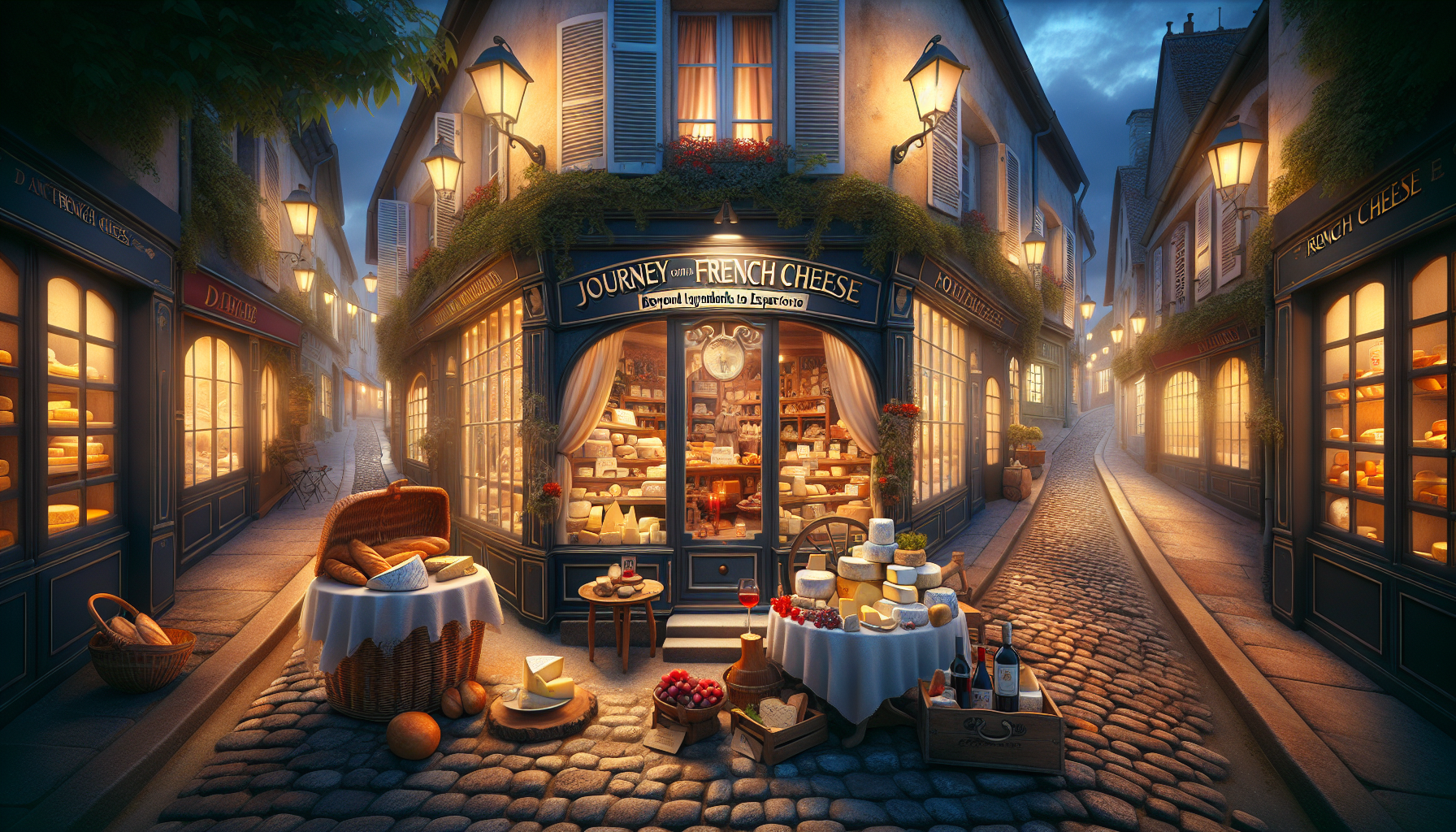Title: The Art of Savoring French Cheese: A Journey Beyond the Plate
Cheese – it’s the ultimate comfort food. In the United States, cheese tends to be an ingredient, perhaps even a garnish, weaving its creamy textures into beloved dishes like mac and cheese, pizza, and burritos. But take a trip overseas, to the rolling fields and bustling fromageries of France, and you’ll encounter an entirely different cheese culture. Here, cheese isn’t just a component; it’s the star of its own delicious show.
In France, it’s not uncommon to see people thoroughly enjoying cheese in its unaccompanied glory. No bread, no crackers. "It’s simply a difference in the way we culturally engage with cheese," explains John Montez, a certified cheese professional at Murray’s Cheese in New York. "For many Americans, cheese is still transitioning from just being an ingredient to being savored in its own right."
Building a Stellar French Cheese Plate
If you’re ready to embrace cheese French-style, why not start with a cheese board? Here are a few guidelines and ideas, drawing on Montez's cheese expertise, to get you started.
Three to Five Cheeses to Rule Them All: When assembling a cheese plate, opt for an odd number of cheeses, which tends to be more visually appealing than an even setup. Montez suggests starting with three cheeses, which is a great way to offer variety without being overwhelming.
Variety is the Spice of Cheese: A well-rounded cheese plate should include a mix of textures and flavors. Aim for a hard or semi-firm cheese, a creamy soft cheese, and a robust blue cheese. You might find yourself gravitating toward a hard Alpine cheese like Comté, a soft Brie, and a tangy Roquefort. Consider mixing milk types as well, like goat, sheep, and cow’s milk, to further diversify your board.
Seasonal Sensibilities: Much like selecting the perfect produce, cheese too follows the rhythm of seasons. Spring and summer might call for fresh goat cheese, while chilly fall and winter nights beckon the depth of a creamy Brie or Camembert. This seasonal variation infuses your cheese platter with freshness and harmony.
Temperature Talk: One key aspect of the French love affair with cheese is the temperature at which it’s served. Montez suggests buying only what you’ll eat that day from a cut-to-order shop to bypass refrigeration, which can dull flavors and textures. If refrigeration is inevitable, allow your cheese to warm to room temperature before serving, preserving its full sensory appeal.
Wrapping Weights: When it comes to leftovers, avoid plastic. Rewrap cheese in cheese paper, wax paper, or parchment to maintain its character without absorbing refrigerator odors.
French Cheese Tasting Adventure: What to Try
With your cheese board building skills sharpened, let's dive into what French cheeses to hunt for, both stateside and abroad.
Hard Cheeses: Comté is a staple, known for its Alpine roots and beloved for its nutty profile when young, evolving into bold, savory notes when aged. For a distinct experience, try Tommes de Savoie for its tangy flavor and unique rind, or seek out Ossau Iraty from the Basque region for its rugged charm. Lastly, Mimolette, with its Gouda-like flavor and striking orange hue, is sure to please.
Blue Cheeses: Roquefort reigns supreme as the quintessential French blue, famed for its rich flavor. In contrast, look for Bleu D'Auvergne for a milder cow’s milk blue that pairs beautifully with a range of dishes, or Herve Mons' 1924 Bleu for a unique blend of milk flavors.
Soft Cheeses: The world of French soft cheeses offers a spectrum from mild chèvres to bold and funky washed rind varieties. A luscious Brie Fermier or Camembert Fermier is ideal for those craving creamy textures, while Epoisses satisfies with its meaty intensity. Triple crèmes like Brillat Savarin woo with buttery delight.
Cheese Pairings and Beyond
Now that your cheese plate is set, it's time to consider what will enhance your tasting experience. Sip on a regional French wine, echoing the terroir of your cheese selection, or explore unexpected pairings like fresh goat cheese with a peated Scotch. Each combination has the potential to unveil new dimensions of flavor.
While a humble baguette is classic, adding accoutrements like preserved cherries, honey, or a selection of meats like jambon or saucisson sec can elevate the tasting experience. Yet, sometimes the greatest joy is simply in savoring the cheese in its full, unadorned splendor.
Ultimately, the cheese plate is more than the sum of its parts. It invites us to slow down, indulge, and appreciate the intricate art of cheesemaking, a ritual the French have perfected through centuries. Whether served at the end of a meal or as a centerpiece to your gathering, let French cheese transport you to a world of taste that's as varied and vibrant as France itself.
For more deep dives into culinary delights, check out the comprehensive guides on Serious Eats.
References:
- Montez, John, certified cheese professional and training and curriculum manager at Murray’s Cheese, New York.
- Recipes and Tips from Serious Eats
